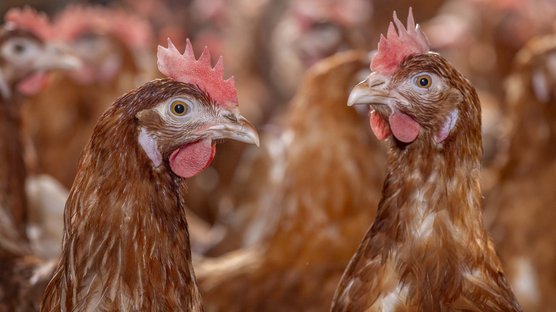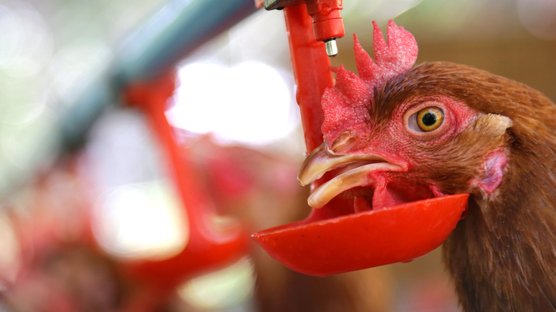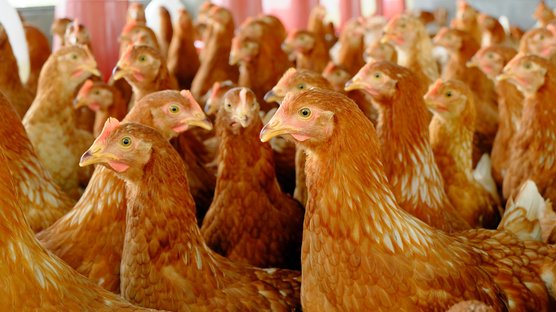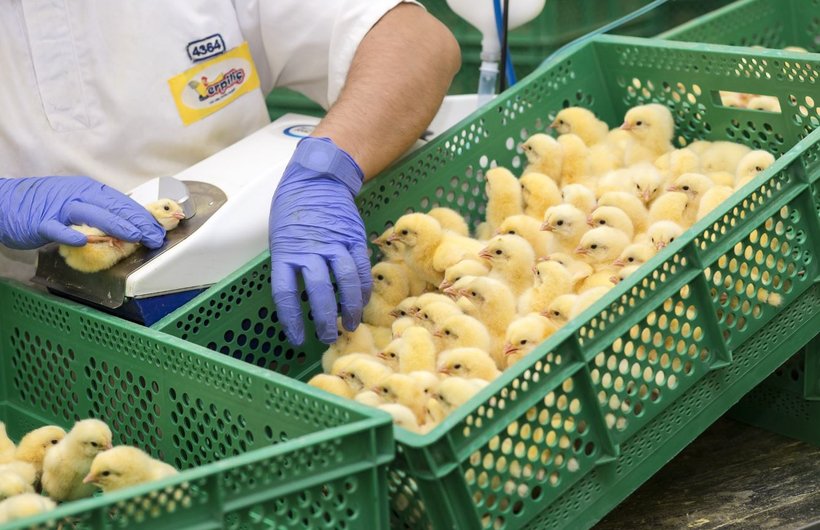
Published on April 21, 2022
Avian Influenza Vaccination, considerations, and essential components
Avian influenza, often known as bird flu, is a contagious viral disease caused by the highly pathogenic avian influenza (HPAI) virus, which continues to threaten poultry farms worldwide. Understanding the critical role of avian influenza biosecurity is essential in preventing outbreaks, alongside rapid and reliable avian influenza detection methods that enable early diagnosis and swift containment. One of the most pressing questions for poultry producers is: Is there a vaccine for avian influenza? While vaccination strategies vary depending on the region and the virus strain, the development and application of an effective avian influenza vaccine and bird flu vaccine have become pivotal in controlling the spread of the disease. Although there is currently no direct medicine for bird flu, combining vaccination with strict biosecurity measures offers the best defense against devastating losses caused by HPAI. This article explores the essential components and considerations for successful avian influenza vaccination programs, helping poultry farmers safeguard their flocks from this persistent viral threat.
The primary measures to deal with high pathogenicity avian influenza (HPAI) have been biosecurity to prevent introduction, early and accurate diagnosis, adequate notification, and “stamping-out” of poultry on affected farms to eliminate the virus. However, vaccines and vaccination have emerged during the past two decades as an essential tool for controlling AI in poultry in some countries, especially in countries with restricted financial and human resources.
Given the high exposure of poultry to HPAI circulating in wild birds in recent years, the question regarding use of vaccination to prevent HPAI in poultry has gained interest (for example in free range/organic chicken and duck/geese production in developed countries). However, at this moment use of vaccines against H5 and H7 HPAI may have unintended negative consequences on trade in genetic stocks and poultry products.
Check out the inspiration talk on Vaccination against Highly Pathogenic Avian Influenza by Professors Stegeman and De Wit
Under optimal conditions, vaccination will increase resistance to infection, prevent illness and death. reduce virus replication, and shedding from respiratory and alimentary tracts, and reduce virus transmission to birds and mammals, including humans. Vaccination as practiced in some developing countries with endemic HPAI allows continued food security in resource scarce situations, especially continued production of low-cost high-quality animal protein for human consumption at the village and household level. However, HPAI vaccination has been associated with complacency for implementation and maintenance of adequate surveillance and biosecurity processes and has slowed the overall momentum to move to an eradication strategy. Moreover, as H5N1 and related viruses have become entrenched and outbreaks prolonged, field outbreaks have been reported in flocks that are well vaccinated with early classical H5 AI vaccines in Central America, China, Egypt, Hong Kong, Indonesia and Vietnam. These failures have been the result of failure of the vaccines (i.e. vaccine efficacy1) or failure of administration to produce an immune response of the target species (i.e. vaccination effectiveness2).
"It is important to bear in mind that the success of a vaccination programme not only depends on technically sound and effective elements, but a consistently proper execution is also equally important. This implies that all persons involved should act according to the plan in a consistent way."
The essential components of a vaccination programme for prevention and emergency management are:
- A national or regional, emergency vaccine bank
- Manufacture and use of only high quality (high potency) vaccines to produce a robust immune response; the vaccine must be capable of preventing infection, prevent shedding upon infection, or sufficiently reduce transmission between birds (Rv<13)
- The quality of the vaccine as mentioned above must have been (laboratory) tested in birds vaccinated under field conditions
- Antigenically relevant vaccine seed strains should be used that closely match the field virus (based on antigenic cartography); this should be kept under continuous review against a changing field virus
- Vaccination should be applied in a targeted or sector specific program and not in nationwide or ring vaccination
- Vaccines should be administered in an adequate way
- Give individual birds adequate number of vaccinations over lifetime, usually minimum of two vaccinations, possibly more in long-live laying hens and breeders / parent stock
- In case of inactivated vaccines at least 80% of the poultry flock should have a protective hemagglutination inhibition antibody titers, this should be checked regularly and give booster inactivated vaccination if less than 80% of the chickens do not meet the minimum titer; effective vaccination coverage (>80%)by recombinant vector vaccines should also be checked.
- Survey the vaccinated populations to find infected birds by virological and or / serological tests in a comprehensive Differentiating Infected from Vaccinated Animal (DIVA) strategy.
- Have a good biosecurity programme in place to reduce HPAI virus exposure onto the premises and prevent spread off premises should infections occur.
- Continually review the programma for it’s effectiveness, having set clear objectives at the onset
- Have an exit strategy
A key long-term aim of the IEC Avian Influenza Global Expert Group is to reduce the treat of Avian Influenza to commercial businesses through the implementation of excellent biosecurity and surveillance. Poultry farms/chains in endemically infected countries that do not yet have the infrastructure and/or resources can also apply the above mentioned elements for the purpose of HPAI management.
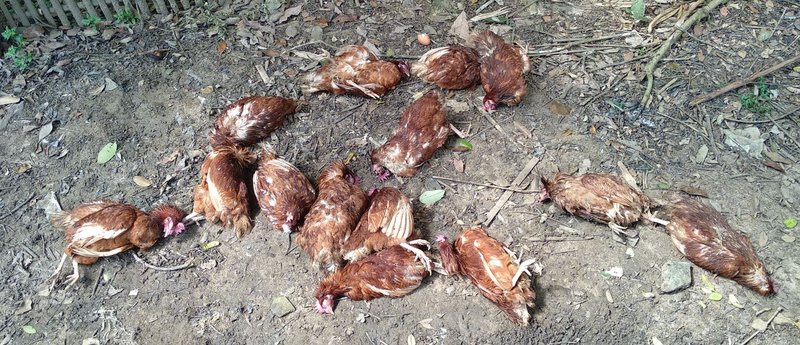
Laying hens affected by HPAI
Explanations
- Vaccine Efficacy. Low antigenic mass in H5 AI vaccines is a less common problem today than it was 10 years ago. The market place has demanded high potency vaccines and most manufacturers have provided such to stay in business. However, in some regions, antigenic drift of the field viruses has occurred such that older classic H5 vaccine seed strains have lost efficacy and continual evaluation and match of vaccine seed strains against field viruses is needed to maintain relevant protective vaccine seed strains.
- Vaccination Effectiveness. Lack of adequate protection in the poultry population in the field has been associated with a variety of application and related issues including: attempting to vaccinate all poultry in the national flock, improper vaccination technique; trying to get field protection from a single vaccination; maternal and active immunity interference; immunosuppressive population; improper storage & handling of vaccines; administration of reduced vaccine dose; high environmental exposure to virus; farmer resistance to vaccination of domestic ducks; high population turnover rate in poultry; logistics problems with administration; and vaccination “burn-out.” For example, attempts to vaccinate village poultry in Indonesia and Egypt have only resulted in 20-40% and 20% vaccine coverage rate, respectively.
- In a vaccinated population an infected bird should infect < 1 other bird.
This article has been written by the International Egg Commission Avian Influenza Global Expert Group.
The expert group consisted of: Ben Dellaert, Professor Ian Brown, Dr Travis Schaal, Dr Alejandro Thiermann, Dr Hongwei Xin, Professor Arjan Stegeman, Dr David Swayne, JT Dean, Julian Madeley, Kevin Lovell & Dr Christianne Bruschke (observer)
In conclusion, tackling highly pathogenic avian influenza (HPAI) requires a comprehensive approach that combines stringent avian influenza biosecurity measures with effective avian influenza vaccination programs. While no specific medicine for bird flu currently exists, timely avian influenza detection paired with vaccination and rigorous farm management remains the most reliable strategy to protect poultry flocks. Understanding the nuances of the available bird flu vaccines and their proper implementation is critical for controlling outbreaks and minimizing economic losses. As the threat of avian influenza (HPAI) continues globally, investing in prevention through biosecurity and vaccination is essential to safeguard the health of poultry, ensure food security, and support sustainable farming practices.

